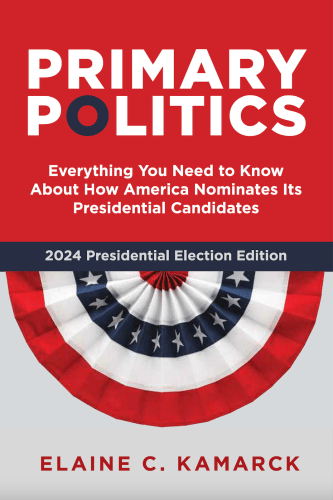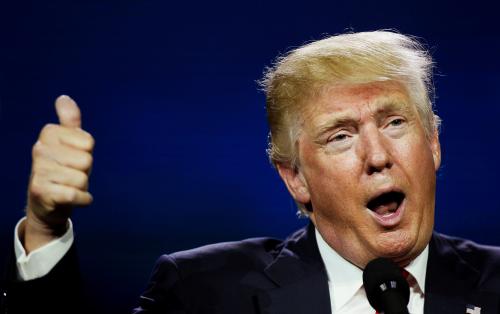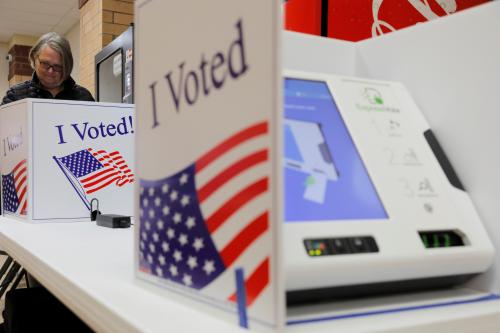The job of Senate Minority Leader is never easy, but pity the Senate Minority Leader Chuck Schumer. It’s his job, along with and Senator Catherine Cortez Masto (D-Nev.), Chair of the Democratic Senatorial Campaign Committee, to win back the Senate. But for reasons that are not readily apparent, some of their best bets have decided to make long-shot runs for president instead.
Unlike 2018, when the deck was stacked against the Democrats, 2020 looks like a much better year for them. Of the 34 Senate seats up, 22 are held by Republicans. To take control of the Senate, Democrats have to pick up 4 of those 22 seats and hold the seats they already have. [1]
But as we saw in House races in 2018, recruiting the right candidates to run is half the battle—that’s where Senate Democrats are in trouble. Take Colorado, for instance: Republican Senator Cory Gardner is one of the most vulnerable Republicans. Colorado’s political trend in 2018 was clear: Democrats captured control of the state senate, increased majorities in the state house, captured a majority of the U.S. House delegation for the first time since 2011, and now hold all five statewide constitutional offices for the first time since about 1950. Democrats ought to be able to take this seat. But for reasons that are not immediately apparent, former Governor John Hickenlooper, who was courted to run against Gardner, is instead running for president. His average poll ratings are less than the 1 percent needed to get him into the first debate.
Less vulnerable than Gardner is Texas Senator John Cornyn. But the young congressman Beto O’Rourke, who rocketed to national fame by coming close in his 2018 run against Senator Ted Cruz, has also decided to run for president, where he is averaging under 5 percent in the polls. Texas is a deep-red state; no Democrat has won a statewide race there since 1994, and no Democratic presidential candidate has won the state since 1976. But the demographics of Texas are changing and that change opens up opportunities for someone experienced in Texas politics. Latino voters make up a sizeable part of the Texas electorate—26 percent in 2018, up from 17 percent in 2014. Because the Latino population is young, those numbers should keep increasing for quite some time, turning Texas from red to purple.
Montana is another place where a potentially strong Senate candidate has gone off in a quixotic race for the presidential nomination. Democrats have been begging Governor Steve Bullock to run against Republican Senator Steve Daines. But Bullock, who is also running for president, barely registers nationally.
In other words, three of the strongest Senate candidates, people who could get the Democrats three-quarters of the way to a majority, are making what looks like futile races for the Democratic nomination. There is, however, a silver lining. The Democratic race will get much clearer after the Iowa caucuses and the New Hampshire primary. History tells us that if a candidate doesn’t manage to win, place or show in these contests they are probably consigned to oblivion. Right now, the Iowa caucuses are expected to be held on February 3 and the New Hampshire primary on February 11. If they move, it would only be to earlier dates.
In Colorado, the filing deadline for the Democratic primary is March 17, 2020 and in Montana the filing deadline is March 12, 2020. If either Hickenlooper or Bullock finish behind the pack they still have plenty of time to run in their Democratic primary. The Texas filing deadline isn’t out yet but it will likely be before the first presidential contests. If the writing is on the wall, O’Rourke may bow out early. If they have money left in their presidential campaign the Federal Election Commission permits them to move it to a Senate campaign under certain circumstances.
Of course, getting out of the presidential race after a humiliating loss may not be the best strategy for winning a primary back home. And late entrants, no matter how well known, will face the wrath of candidates who have been working hard while the better-known candidates pursue voters in Iowa and New Hampshire.
There are many problems with such a crowded Democratic race for the presidency but the biggest one could turn out to be in the Senate.
[1] The count includes one special election in Arizona for the seat currently held by Republican Martha McSally—the losing candidate in that year’s Senate race who was immediately appointed to John McCain’s vacant seat. The two independents caucus with the Democrats.










Commentary
Poor Chuck Schumer—his best candidates want to be president, not senator
June 4, 2019